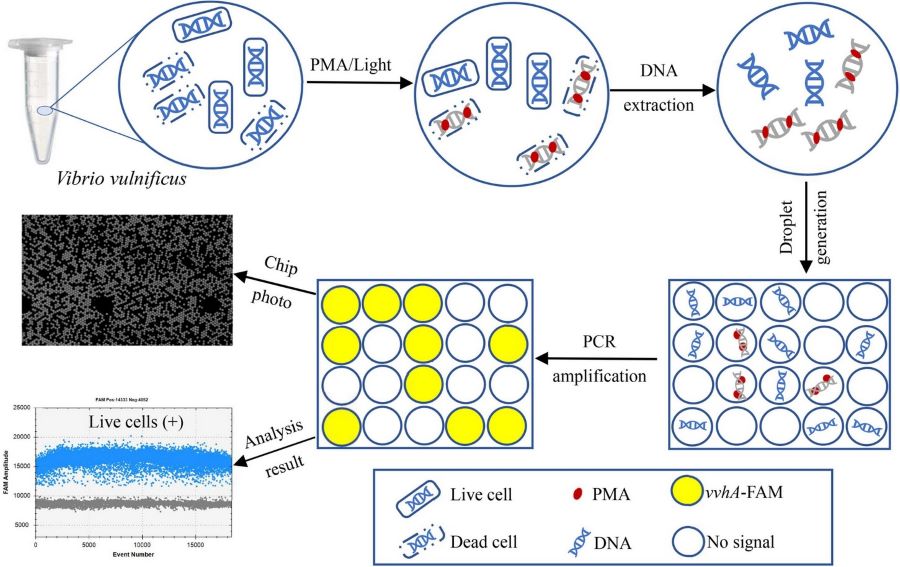Quantifying Alive vs Dead Cells with ddPCR
Digital PCR combined with the chemical agent PMA (Propidium Monoazide) enables developing assays that distinguish live cells from lysing or dead cells. This is due to PMA being able to penetrate cells with compromised (semi-permeable) membranes, binding to their gDNA and inhibiting its PCR amplification. In contrast, live cells with intact membranes prevent PMA entry, preserving their gDNA for amplification. This selective mechanism allows PMA-based assays to accurately quantify gDNA from only live, intact cells. Such precision is critical in applications requiring accurate live cell counts, such as determining the titers of probiotics or pathogens. For instance, Hu et al., 2022 quantified live Vibrio cells in simulated clinical samples using PMA-qPCR and PMA-ddPCR. Among other things, their study found that PMA-ddPCR was 15 to 40 times more sensitive than PMA-qPCR.

source: Hu et al., 2022, Figure 1